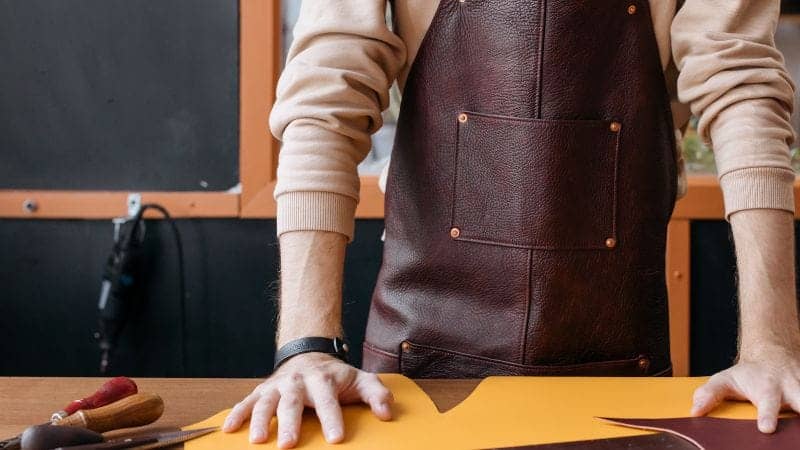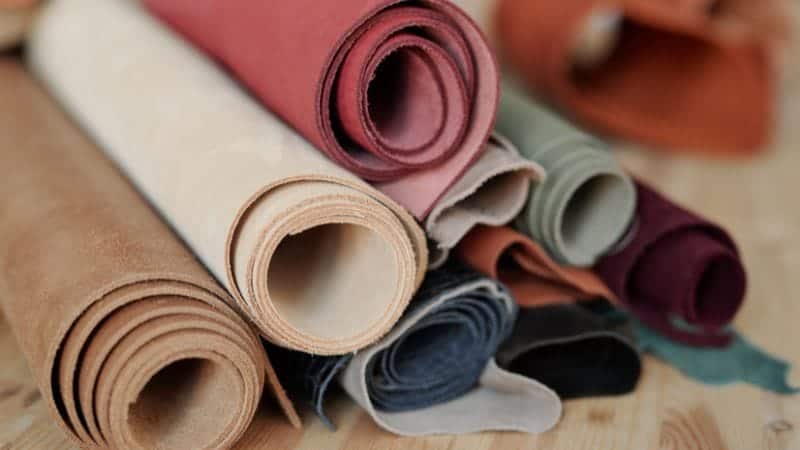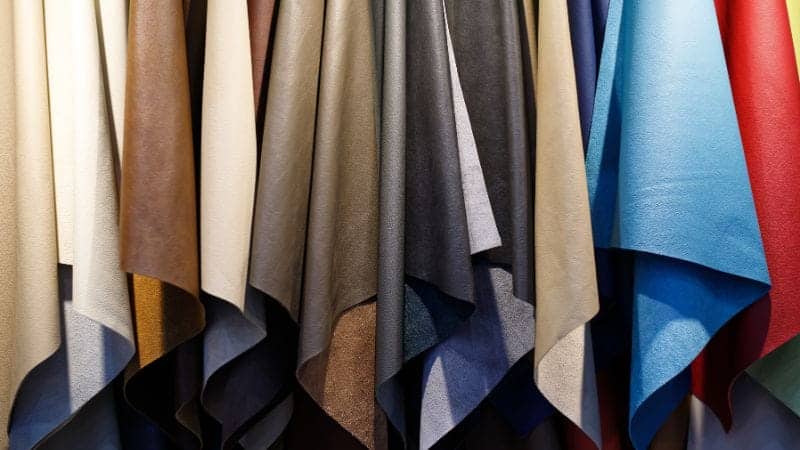
When you first encounter leather products, it’s easy to get confused about the different types of leather available. Faux leather and PU leather are two leathers that are often conflated. You may find yourself wondering: Is faux leather better than PU leather? Actually, all PU leather is faux leather, but not all faux leather is PU leather.
When it comes to comparisons, the only true contrast is between real leather and faux leather varieties.
Faux leather, also known as synthetic leather, vegan leather, or artificial leather, is a man-made material manufactured to mimic the look and feel of genuine leather.
Unlike real leather, faux leather products do not have any animal hide; on the contrary, the fabric base material used is more often.
Understanding Different Types of Faux Leather

There are several types of artificial leather, each with its own composition and manufacturing process. Here are some types of faux leather:
Polyurethane (PU) Leather
Polyurethane (PU) leather is one of the most popular and widely used types of artificial leather. It is made by coating a base fabric, such as polyester or cotton, with a layer of polyurethane. PU leather is known for its softness, flexibility, and breathability, making it a popular choice for clothing, upholstery, and accessories.
Polyvinyl Chloride (PVC) Leather
Polyvinyl chloride (PVC) leather, also known as vinyl leather, is another common type of artificial leather. It is made by coating a base fabric with a layer of PVC. PVC leather is more rigid and less breathable than PU leather, but it is also more durable and water-resistant, making it suitable for applications such as automotive upholstery and luggage.
Bonded Leather
Bonded leather is a composite material made by combining leather fibers or shredded leather scraps with a polyurethane or latex binder. The resulting material is then coated with a polyurethane or PVC layer to mimic the appearance of genuine leather. Bonded leather is less expensive than genuine leather but also less durable and prone to peeling or cracking over time.
Bicast Leather
Bicast leather, also known as bycast leather, is a type of artificial leather that combines a split leather backing with a polyurethane or PVC coating on the surface. The split leather backing provides some of the properties of natural leather, while the synthetic coating gives it a uniform appearance and texture. Bicast leather is more durable than bonded leather but still less durable than genuine leather.
Plant-Based Leather
In recent years, there has been a growing interest in plant-based or vegan leather alternatives made from materials such as pineapple leaves, mushrooms, or other plant-based fibers. These materials are designed to be more environmentally friendly and cruelty-free than traditional artificial leathers. However, their production and properties can vary widely depending on the specific materials and processes used.
How Can I Tell PU Leather and Other Faux Leather?

When you are shopping for faux leather made products like leather jackets, leather shoes, etc, there are two things that need to be considered: durability and price range.
Generally speaking, PU is the most leather-like among these types of leather and easy to maintain. If you don’t chase the texture of animal products, PU leather is your long-lasting choice.
From the perspective of the price, appearance and texture, here is a comparison of PU leather with other types of artificial leather:
PU Leather vs PVC Leather:
- PU leather generally has a more realistic leather-like appearance and soft, supple feel compared to PVC leather.
- The surface texture of PU leather can be embossed or printed to closely mimic the natural grain of genuine leather.
- PVC leather tends to have a more uniform, plastic-like surface texture that doesn’t resemble real leather as closely as PU leather.
- PU leather is generally more expensive than PVC leather due to the higher material and production costs involved.
PVC leather is a more affordable option as the raw materials (polyvinyl chloride) and manufacturing process are less costly compared to PU.
PU Leather vs Bonded Leather:
- PU leather has a more consistent and realistic leather-like texture compared to bonded leather, which often has an artificial, overly uniform appearance.
- The surface of bonded leather is very flat and even since it is made from shredded leather fibers bonded to a backing, unlike the more natural grain of PU leather.
- Bonded leather is typically the most inexpensive type of artificial leather as it is made from leftover leather scraps bonded together.
PU Leather vs Bicast Leather:
- Bicast leather has a grainy appearance due to embossing, giving it a more leather-like appearance similar to PU leather’s embossed grain.
- However, PU leather generally has a softer, more supple feel compared to the stiffer bicast leather which has a split leather backing coated in polyurethane.
- Bicast leather tends to be priced between PU leather and genuine leather due to its split leather backing coated with polyurethane.
PU Leather vs Plant-Based Leather:
- Plant-based leathers can vary significantly in appearance and texture depending on the specific materials used (e.g. pineapple leaves, mushrooms, etc.).
- Some high-quality plant-based leathers may closely mimic the look and feel of genuine or PU leather, while others may have a more uniform, plastic-like texture.
- In general, PU leather tends to have a more consistent leather-like look and feel compared to most plant-based options currently on the market.
- Some high-end plant-based leathers using innovative materials may be priced similarly or even higher than quality PU leather products.
Distinguishing between PU leather and other types of faux leather may be challenging, especially for the untrained eye. However, by understanding the key differences in material composition, appearance, texture, durability, water resistance, and breathability, you can make an informed decision when shopping for leather products.
Ultimately, the choice between PU leather and other faux leathers depends on your priorities – whether you value a genuine leather appearance, water resistance, breathability, durability, or affordability.

